Spain is home to 49 UNESCO World Heritage sites. Amongst those Barcelona has 8 of them inside the city. Aside from the UNESCO declared ones, there are numerous heritage sites as well. Many a times, visitors may miss these undeclared ones as they are not listed, but the UNESCO sites attract thousands of visitors everyday. The project aims to explore the heritage sites of Barcelona and unveil the undeclared sites within the vicinity. So as visitors don’t miss the other heritage sites.
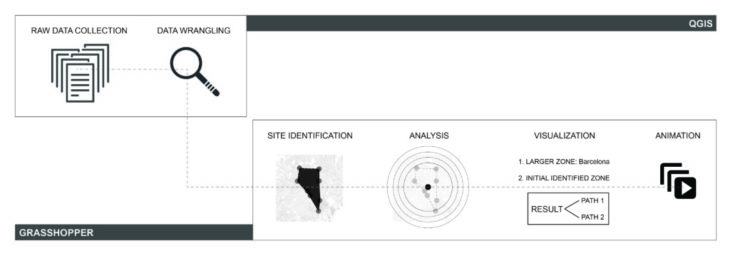
First using the area of the Barcelona Municipality, the eight UNESCO World Heritage Sites are located. Using the “shortest path” tool a travel path is produced between each of these points.
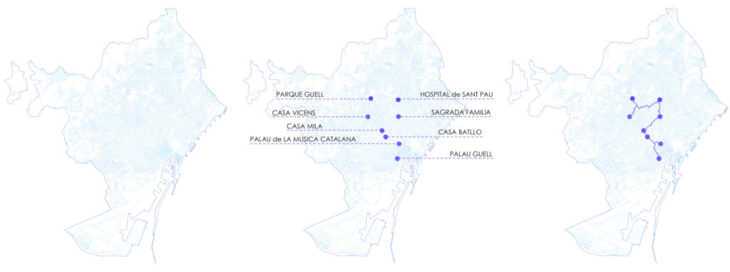
The path created between these eight sites is then used as an “attractor curve” using the Barcelona city as a grid. The lines are extruded in relation to the curve hence creating a field condition where the dark blue are can be identified as the proximity zone with all eight UNESCO Heritage Sites which draws most visitors.
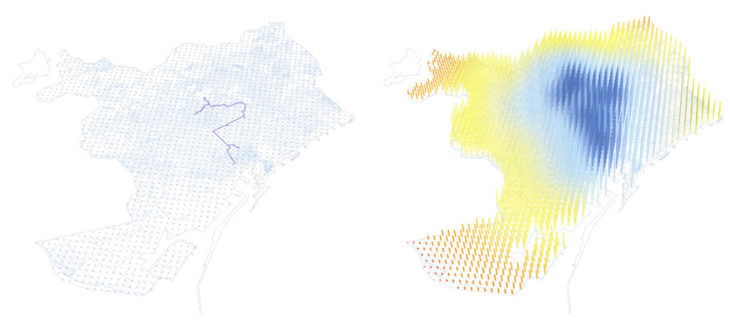
The zone with the eight sites is then bounded into a polygon. Other heritage sites are then revealed into the same area. Using the center from the polygon, an area of 800 meter radius is used to indicate all heritage sites including the UNESCO identified ones. Onwards more heritage sites are revealed as the area expands every 200 meters. It can be understood how heritage sites are scattered all over the city with less of them towards the outskirts and most in the districts of Ciutat Vella and Eixample.
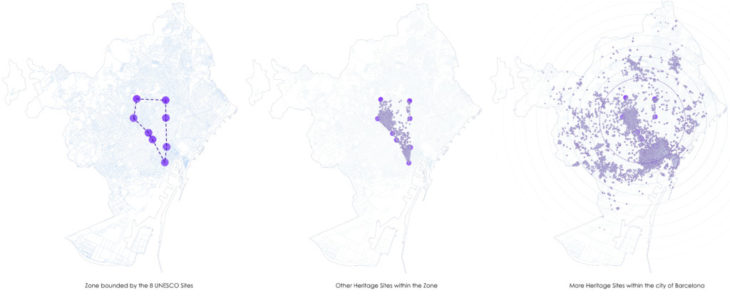
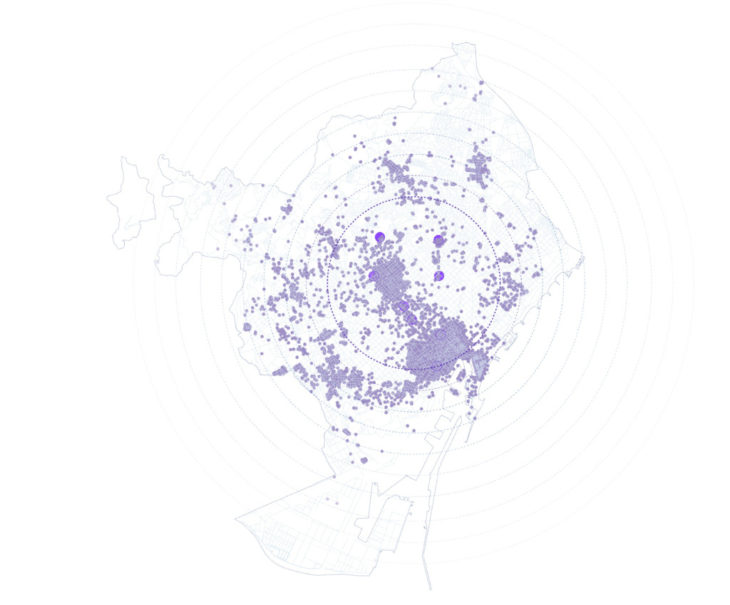
The zone with the eight sites is further analyzed for comparing the shortest path for the rushed tourist verses the curious resident who can take the longer path and hit more numbers of heritage sites.

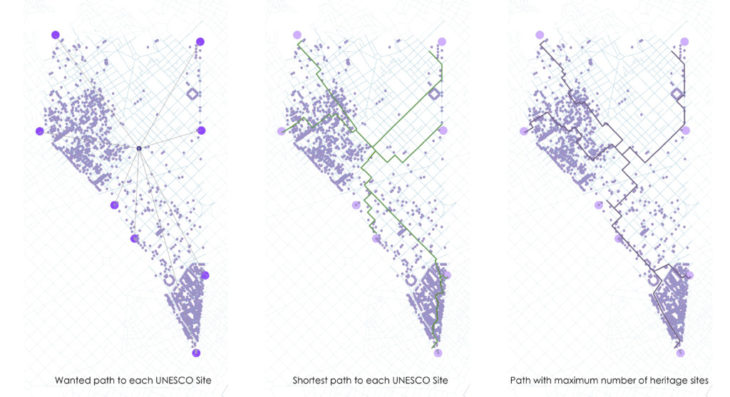
“Avoiding Near Misses” is a project of IAAC, Institute for Advanced Architecture of Catalonia developed in the Master in City & Technology, 2021/22
Students: Aida Hassan
Faculty: Eugenio Bettucchi, Iacopo Neri